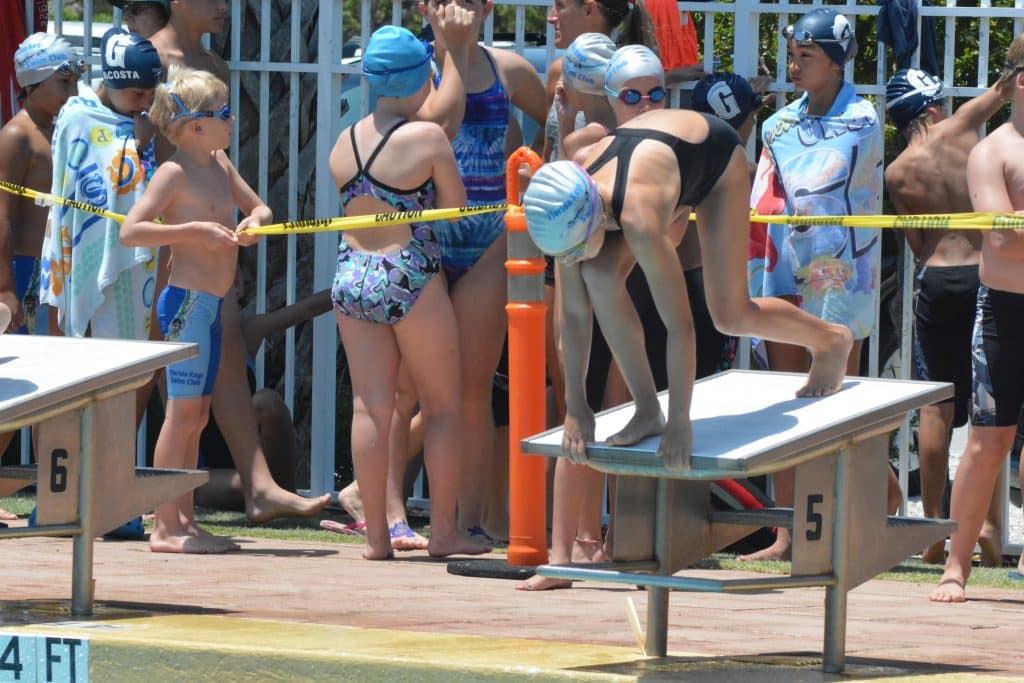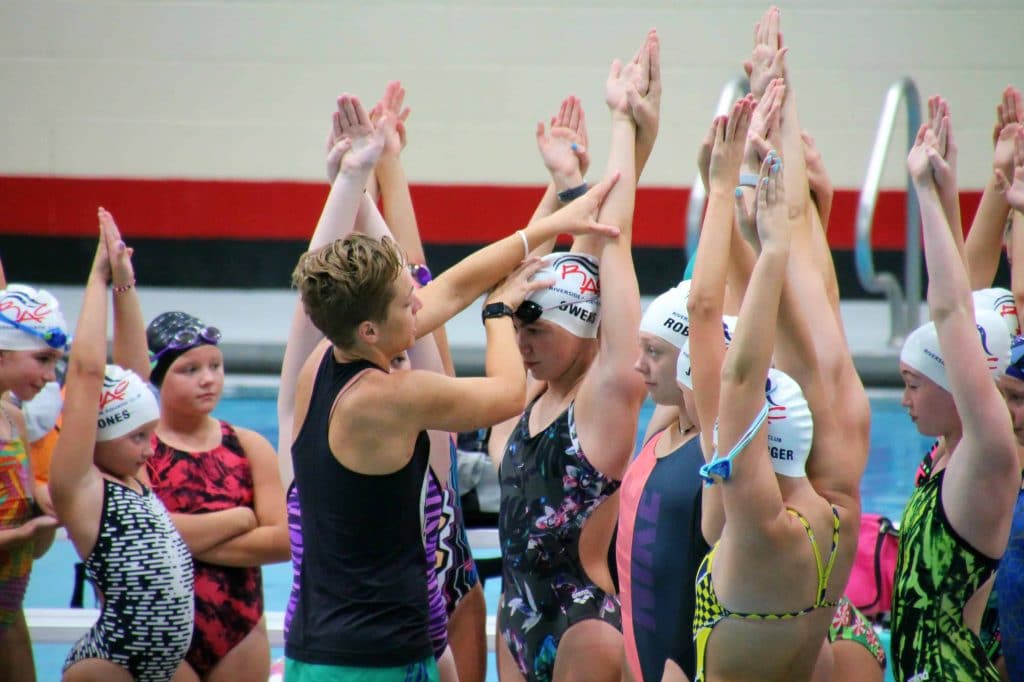The past 3 months we’ve hosted a FREE webinar with the purpose of getting your swim Starts EVEN FASTER (in 30 minutes or less)! Each month, we looked at a different part of the Start in including: The Set-Up, the Arm Throw, and the Entry. These integral components build on one another and all three are required for a super, fast Start. Let’s review each of them one by one to help you get faster on Starts today!
Let’s Get Started…
1. Setting Up For Fast Swim Starts
Most people make the mistake of focusing on the “active” part of a Start, or the part where the swimmer is getting off the blocks and into the water as fast as possible. Giving thought to the Start SET-UP, and not just the reaction from “take your mark, go” is just as important, as focusing on getting off the blocks quickly. That’s why we started with the set-up.

Did you know that there are 30 different starting styles when you take into account all of the possible combinations of your arms, legs, and weight distribution? That’s a lot more than people realize! As as result, the best combination is going to depend on an individual swimmer and what works best for them. But, we can rely on 4 main components of every fast swim Start set-up:
- Legs Apart
- Weight Load Backwards
- Locked Elbows Facing Arm-Pits
- Hips Higher Than Hands
We will go into each of these components into further detail in our upcoming Starts Course (spoiler alert), but right now we are only specifiically talking about the Starts from the block – not Backstroke Starts. If you need more on the Backstroke Start, check out this blog post: How To Teach The Perfect Backstroke Start
2. Throwing Your Arms For A Fast Swim Start
Same with your Start set-up, the way that a swimmer THROWS THEIR ARMS off the blocks is a crucial factor in overall Start success. And, it’s not something that many people spend a lot of time thinking about or experimenting. Our second webinar on swim Starts revolved all around the arms.
We’ve discussed the difference between a Butterfly and a Sling-Shot Start before on the blog, but there are even more types of arm throws than that:
- No Help from Arms
- Backwards to Forwards Arms
- Slingshot Start
- Baby Butterfly Start
- Butterfly Start
3. Entering the Water For Fast Swim Starts
Doing all of that work on the Start set-up and arm throw means nothing if a swimmer doesn’t enter the water in a way that keeps their momentum STRONG! A clean dive entry has 5 components:
- Arms are locked and loaded through the entry (in a streamline position)
- Shins become parallel to the block AS SOON AS POSSIBLE
- Entire body enters the water through the same entry point (or hole)
- Back leg gets higher than the rest of the body
- Entire body makes MINIMAL SPLASH

After diving into specifics of these 5 components, we spent the rest of the webinar going over drills to help your swimmers with their entry (including one that purposefully gets it very wrong in order to feel what is the right). We also watched examples and discussed them. Just another way that VIDEO ANALYSIS is an incredible tool for swimmers!
What Next?
We’ve loved these bite-sized, monthly ways to make our community better! So much so that we’re diving (haha) right into the next webinar series! The next topic is going to be the Backstroke Start. Part 1 will take place on November 30th at 1 PM EST. Join us. Sign-up HERE!

Until Next Time,
Abbie Fish and the Swim Like A. Fish Team

One Response
thank you very much